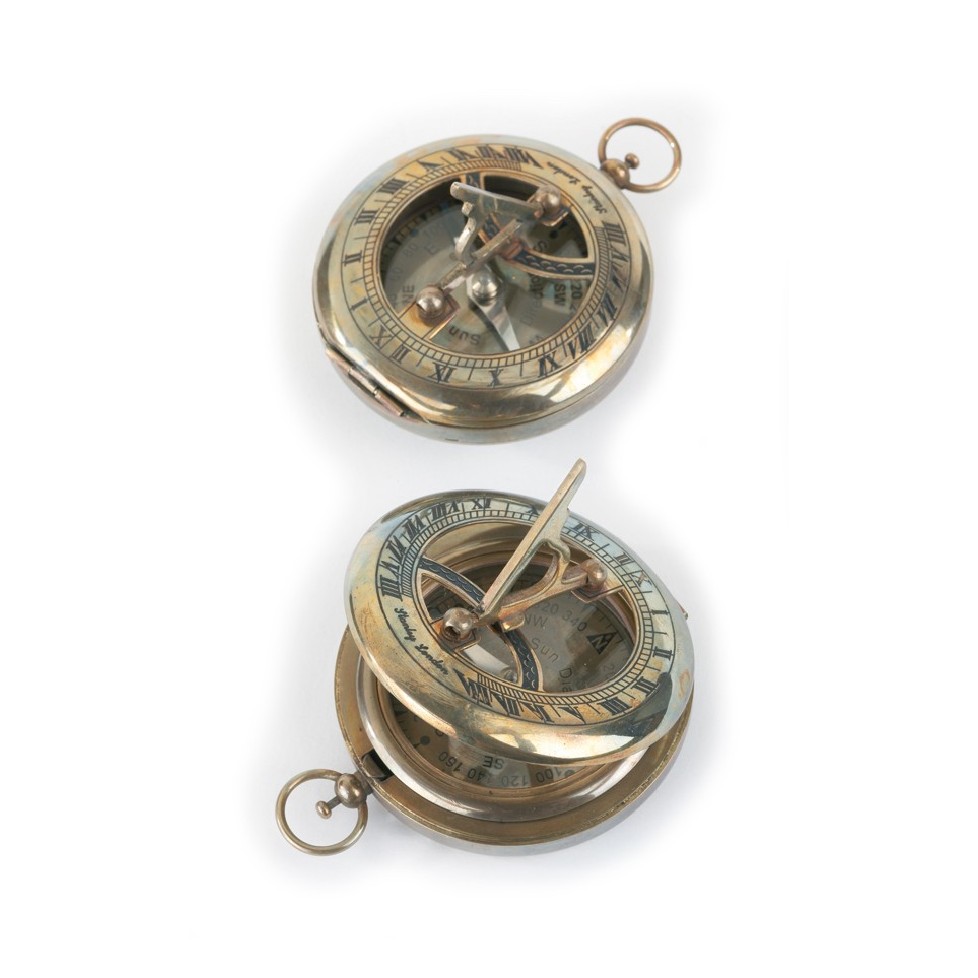



Reproduction of a compass-sundial in brass of the type that Christopher Columbus would have used.
Reproduction of a compass-sundial in brass of the type that Christopher Columbus would have used.
The compass opened the world of exploration and discoveries. In the 13th century BC, the Chinese already used the principle of the magnetic needle. Used for the first time by feng shui priests to indicate where and how to build. The Chinese sailors adapt it to navigation, towards the year 1000, in order to keep the course. The Arabs perfect it by mounting it on an axis. It arrives in Europe between the 10th and 11th centuries, allowing navigators to cross the oceans and explorers to discover the continents. The first instrument that resembles the one that currently exists is due to the Portuguese Ferrande (1483).
This elegant IMEX Marine barometer analyses pressure variations allowing it to predict the weather.
Brass sextant with an acacia wood box elegantly decorated with brass inlays.
Antiqued brass and acacia wood compass with dial. Decorative marine piece can be used as a paperweight.
Decorative compass made of brass and sheesham wood.
Antiqued brass compass with glass magnifier and rosewood box.
Decorative brass and sheesham wood sandglass. It runs for about 10 minutes.